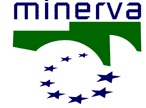
|
|
|
|
|
|
|
|
|
 |
Path: Home » Publications » Handbook on cultural web user interaction »
Table of contents » Chapter 2 » Chapter 2.1
|
| |
Handbook on cultural web user interaction
|
2.1 Cultural entity types Who am I?A cultural entity can be a person, an organisation, an institution or a group of different entities combined to deliver a cultural product, which may also deploy web technologies in achieving its aims. 2.1.1 Archives (see also 1.1.3) An archive is an entity, public or private, which manages and provides access to archive material. By “archive material” we mean records, documents, or materials conserved as evidence or because of their historical interest. Remote users who could be interested in information and archive services, are principally people interested in public administration and culture or in the use of new technology for public services and document management. Specialist or professional users are interested in more specific research, and in exchanging experience and good practices in organising archives and registers. However, the users of archives are not only professionals: they are often university students, teachers and school students, university professors, people interested in establishing or managing their own archives. In addition there are amateurs interested in history, tour operators interested in collecting content for creating tours, services which carry paid research for third parties (genealogical or anagraphic), etc. 2.1.2 Library (see also 1.1.1) “A public library is an organisation established, supported and funded by the community, either through local, regional or national government or through some other form of community organisation. It provides access to knowledge, information and works of the imagination through a range of resources and services and is equally available to all members of the community regardless of race, nationality, age, gender, religion, language, disability, economic and employment status and educational attainment.” (IFLA/Unesco, 2001) The primary goal of a library is to offer resources and services for the diffusion, archiving and conservation of all types of culture and expression, regardless of source or location. Documentation centres are intended as belonging to this category. 2.1.3 Museum (see also 1.1.2) “A museum is a non-profit making, permanent institution in the service of society and of its development, and open to the public, which acquires, conserves, researches, communicates and exhibits, for purposes of study, education and enjoyment, material evidence of people and their environment”. While accepting this ICOM definition, it is important to stress that museums constitute a varied and articulated universe; vast because of the many histories of education, diverse content, collections and compositions. They may be viewed as “abstract” representations of the societies that generated them; it is for this reason, more than in other sectors, that museums can be considered a unifying symbol of the diversities of the cultures of their Regions. 2.1.4 Widespread cultural heritage This category includes fixed-location archaeological, architectural and natural heritage. They are dealt with together, because they share the feature of being “fixed in place” and are often so important as to have become part of the historical, cultural and scientific identity of their location. The oldest European park goes back to Sweden in 1909. The twentieth century saw a specialisation and increasing specification in the realisation of parks and reserves which often included differing values which were present in the location: environmental, historical/cultural, traditional and the emerging sciences of archaeology and urban-architecture. This led to the composition of complex landscapes and the most advanced examples of “abstract parks” such as for example, the “park of literature” which is clearly anchored to a defined territory, or “areas of cultural tourism” which have clearly defined homogeneous areas and add value to important historic/cultural, environmental, ethno-gastronomic elements. From the point of view of a web application, the subject is wide and complex. It includes traditional archaeological Monuments, buildings and on-site historical/artistic heritage, entities which are often connected with local museums, libraries and archives. The category also embraces parks and archaeological areas which are managed by a public institute and also specific projects such as stratigraphic and thematic surveys of the territory. This category includes temporary festivals, events and exhibitions. 2.1.6 Management and governing institution This category includes all levels of administration of the cultural heritage: from central state and regional offices (Ministries, General Management) which are concerned mainly with directing and co-ordinating policies, strategies and spending programmes, to local offices and institutes with technical-scientific administrative roles. This includes museums, libraries and archives. 2.1.7 Centre for research and training, School (see also 1.1.5) The Web itself originated as a research centre. Creation of Web systems for the exchange of information and sharing of documents in hypertext is the need which Tim Berners Lee aimed to meet through a communication tool which harmonised existing standards (networks, data transmission, hypertext, multimedia). This category includes research networks, websites on specific research themes, academic digital archives, schools and universities. 2.1.8 Cultural digital project The implementation of a website is often one of the outcomes of a cultural project. In line with the objectives of the project, it aims to improve and strengthen strategies for the creation and diffusion of cultural content. A cultural digital project may create its own Web-based data banks. In this case, complying with the norms for preservation of privacy of contents, the cultural web application becomes not only a tool for communication, but also the manifestation of the Project itself. This category includes Portals (see also 1.1.6), Digital libraries (see also 1.1.1.1) and Cultural tourism portals (see also 1.1.7). They play an increasingly important role in helping users to access cultural information and services. |
|
|
|
|
Copyright Minerva Project 2008-09,
last revision 2008-09-19, edited by Minerva
Editorial Board. | |